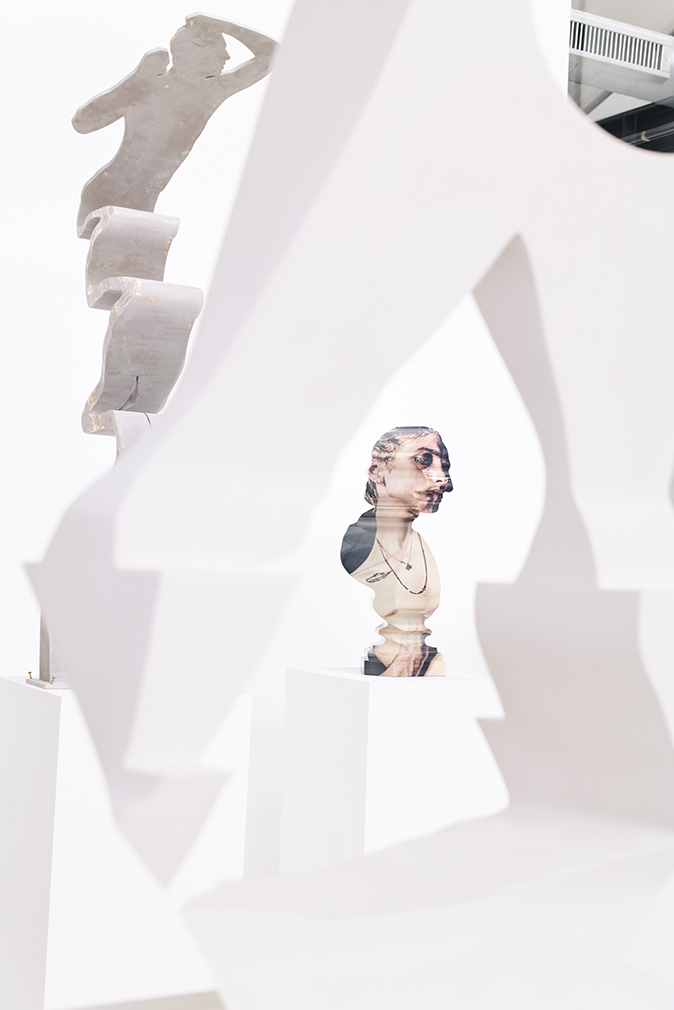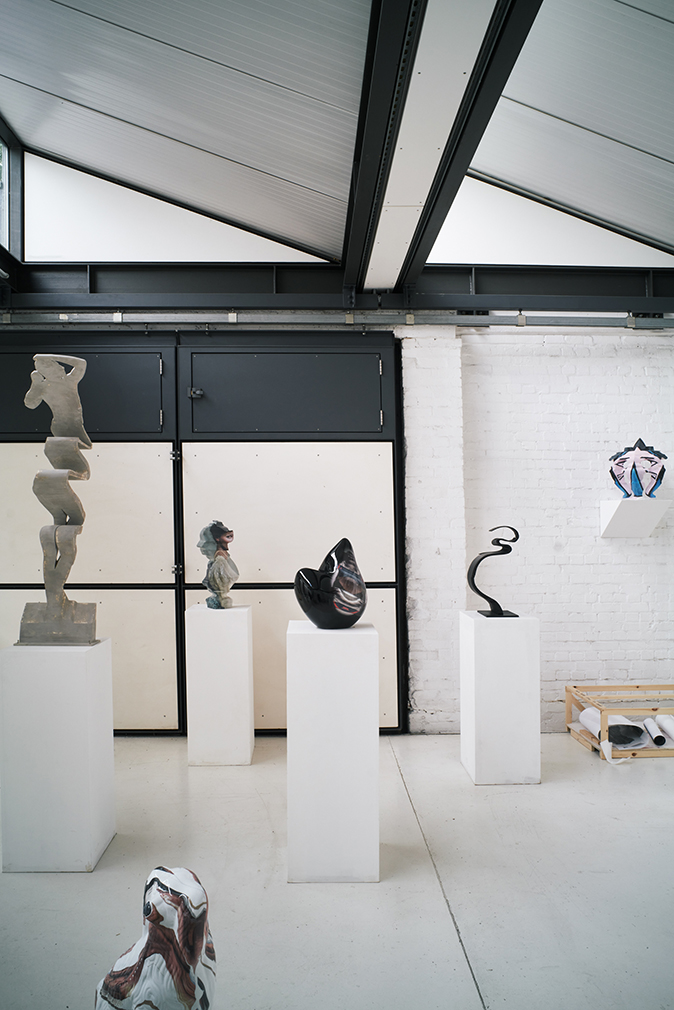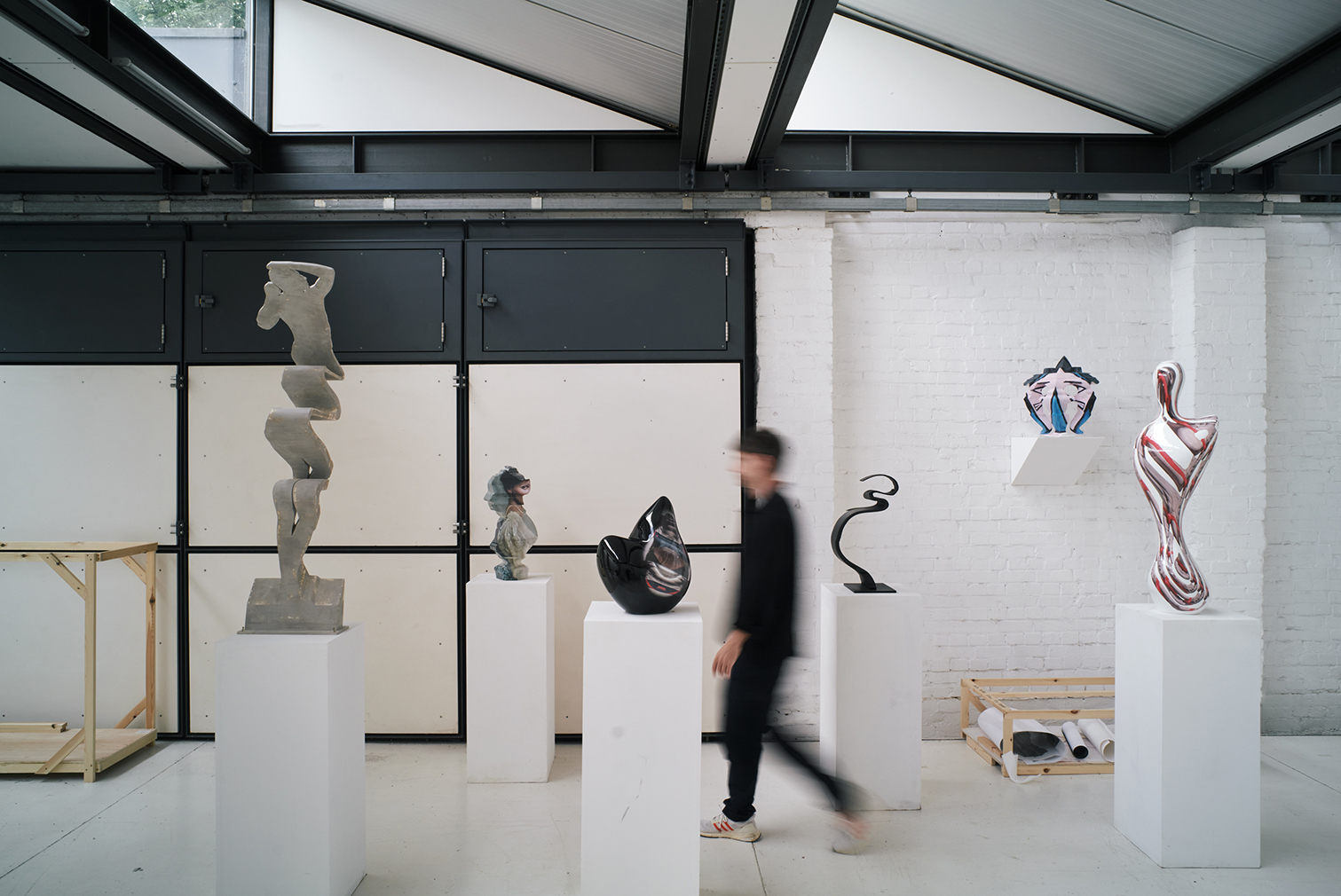‘I had a dream a few years ago that I’d find a derelict space with great light, huge ceiling height, a concrete slab floor and large sliding doors,’ says Nick Hornby, the London artist whose monumental sculptures have found permanent homes across the capital. ‘Then I saw this place.’
Is he claiming an affinity for the supernatural? He does talk about his ‘slight obsession’ with ghosts – both the spectres from British history who inform his work and the buried dead in Kensal Green Cemetery, just outside his studio’s sliding metal door, where he delights in walking and reading tombstones.
But Hornby’s work seems too cerebral for ghost stories. Politically charged trompe l’oeils, they reframe old histories and stereotypes, recast Victorian busts and Rodin bronzes, and juxtapose ancient kings and abolitionists. His first unveiling this summer, outside St James’s Park in London, critiques the ‘great man on horseback’ statue in six tonnes of Cor-ten steel, bent into a waving gesture described in Laurence Sterne’s 18th-century novel The Life and Opinions of Tristram Shandy, Gentleman. Viewed from various angles, the installation can resemble a warrior in battle or a shrivelled abstract.

Photography: Kane Hulse

Photography: Kane Hulse

Photography: Kane Hulse

Photography: Kane Hulse

Photography: Kane Hulse

Photography: Kane Hulse

Photography: Kane Hulse

Photography: Kane Hulse
‘If there were a vinaigrette recipe for my sculpture, it would contain the asymmetry of Barbara Hepworth and a renaissance contrapposto,’ he says.
As for this vast studio in northwest London, blessed with dappled sunlight from clerestory windows: it was a lucky escape from the atelier he occupied for a decade, a sometime film set fashioned as an ersatz Gothic church.
‘That space had so much character and colour, everything in it needed to be monochrome,’ he says. (See his busts of Rilke, Jane Austen and Kurt Cobain.) ‘My recent work is a reaction against that.’
The ‘dream’ studio won awards years ago for a postindustrial intervention by the engineering conglomerate Arup, which topped a brick box with hefty steel factory roof and banks of glass that provide an even coating of light. The door rolls to the side, in the manner of a barn, opening into a whitewashed office and showroom. Beyond those are workshops for digital imaging and fabrication, plus a fully functioning kitchen. Hornby employs a studio manager, head of technology and two fabrication artists to help with his schedule of exhibitions. One pandemic-era solo show at Mostyn in Llandudno, Wales, required the rapid production of 30 ‘meta-cubist’ marble and resin sculptures applied with liquified images.
‘If you give a sculptor space,’ he says, ‘they’ll always ask for more.’
This is a step up from the relatively simple, small-scale ‘making’ of Hornby’s early career. Commissions for more complicated work ensued – one requiring a maquette the artist knocked up with a lump of cheddar and some wire. In the manner of a postmodern Richard Serra, the artist taught himself coding and 3D printing to deal with them. The results are no longer drawn by hand but ‘scripted’ in code to yield a formal 3D object.

Of course, no atelier could physically accommodate a five-metre soldier on a six-tonne horse. For those instances, Hornby moves his work to an expansive CNC laser-cutting facility in Guildford, a mould-maker in Birmingham, a bronze foundry in Stroud or the Benson-Sedgwick metal fabricators in Dagenham.
‘If I were to make it myself, I’d be interfering with the curiosity,’ he says. ‘The difference between caricature and beauty is subtle nuance, delicacy of line. Unlike carving wood by hand, a water or laser jet uses pinpoint precision. There’s no fighting against the grain. That precision is the subtle nuance.’
Precision is key because Hornby doesn’t want viewers to be distracted by the technology. ‘My first job is to make an object phenomenological, to invite questions about material, form and formal perspective. Yet my priority is always what things mean and not how they’re made.’
Hornby will reveal two more large-scale sculptures this summer – one in front of David Chipperfield’s One Kensington Gardens, the other on Warwick Road in Earl’s Court. But he says his ‘traditional period’ is behind him now. His next show will feature ideas about his late mother. That’s not to say he’ll be thinking smaller. The limitations of this giant space are never far from mind.
‘If you give a sculptor space,’ he says, ‘they’ll always ask for more.’
Nick Hornby’s sculpture, ‘Power over others is weakness disguised as strength’ is unveiled on 22 June 2023 at Orchard Place in Westminster, London SW1H 0BF


























